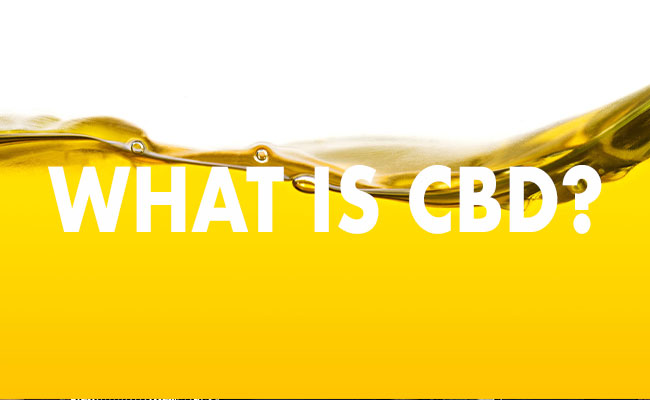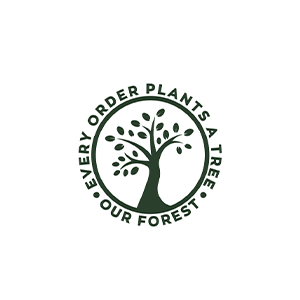CBD, or cannabidiol, is one of over a hundred active compounds found in the hemp plant. Considered a cannabinoid, CBD has numerous therapeutic benefits and works naturally with your body's endocannabinoid system (ECS) to bring homeostasis - or balance- to your mind and body. But that's just the beginning...
WHAT IS CBD?
THE ENDOCANNABINOID SYSTEM (ECS)
WHAT IS THE ECS?
The endocannabinoid system (ECS) is possibly the most important physiologic system involved in establishing and maintaining human health. Endocannabinoids and their receptors (CB1 & CB2) are found throughout the body: in the brain, organs, connective tissues, glands, and immune cells. In each tissue, the cannabinoid system performs different tasks, but the goal is always the same: homeostasis, the maintenance of a stable internal environment despite fluctuations in the external environment.
CB1 RECEPTORS
CB1 Receptors are primarily found in the brain and central nervous system, and to a lesser extent, other tissues.
CB2 RECEPTORS
CB2 Receptors are mostly in the peripheral organs, especially cells that are associated with the immune system.
FULL SPECTRUM vs. BROAD SPECTRUM vs. ISOLATE
CBD comes in several forms including Full Spectrum, Broad Spectrum, and Isolate, each with their own benefits and uses. Let's take a look...
FULL SPECTRUM
Full-spectrum CBD extract contains all elements of the hemp plant including essential oils, terpenes, flavinoids, and cannabinoids, such as cannabinol (CBD), cannabigerol (CBG), and Cannabinol (CBN) to name a few. Full-spectrum CBD products may also contain up to 0.3% of tetrahydrocannabinol (THC), the cannabinoid in the cannabis plant that produces that 'high' feeling.
BROAD SPECTRUM
Broad-spectrum CBD extract, like full-spectrum, contains all elements of the hemp plant including essential oils, terpenes, flavinoids, and cannabinoids but without tetrahydrocannabinol (THC.) THC is filtered out using various processes including charcoal filtering and advanced chromatography to a level that is undetectable.
ISOLATE
CBD Isolate - which typically comes in a powdered form - is a pure form of CBD that contains none of the other compounds from the hemp plant. The refining process strips away all other cannabinoids - including THC - and any plant matter, terpenes, and flavinoids. What remains is the CBD chemical compound in its purest form.
CANNABINOIDS
WHAT ARE CANNABINOIDS?
The cannabis plant is thought to contain over 500 chemical compounds, many of them only in trace amounts. The two most prevalent cannabinoids are THC and CBD.1 There are also the so-called minor cannabinoids — like cannabigerol (CBG) or cannabinol (CBN), flavonoids, and terpenes — the aromatic oils also found in spices, fruits, and vegetables. (It is mistakenly assumed that THC and CBD cause the powerful aroma of cannabis, but they are odorless. It's all about the terpenes).2 There are also inactive acid forms of the cannabinoids such as THCA that can be converted to active forms through a process called decarboxylation. Over the years, researchers have struggled to understand how different varieties of cannabis produce such a wide range of medicinal and intoxicating ("high") effects. It is the result of these many compounds, all in differing amounts, acting in concert.3
Of the numerous cannabinoids produced by the plant, only a handful are produced in any significant quantity. 4 In addition to THC and CBD, they include CBG, CBC, CBN, and THCV (though technically CBN and THCV aren’t produced by the plant; they’re oxidation by products THC).5 The name “minor cannabinoid” is somewhat deceiving. It’s not that their power is minor; it’s simply that they naturally occur in smaller quantities.
OUR CANNABINOIDS: CBD, CBG, & CBN
At Element Apothec, we utilize several hemp cannabinoids in our products. Specifically, CBD, CBG, and CBN. Let's take a closer look a each of these incredible compounds...
CBD
CANNABIDIOL
CBD is one of over 100 compounds found in the cannabis plant. It is found in both hemp and marijuana plants, with higher quantities in hemp. CBD is a major cannabinoid that has been investigated for its anti-inflammatory properties associated with promoting calmness, encouraging restful sleep, and easing overall discomfort.
CBG
CANNABIGEROL
CBG is considered a minor cannabinoid found in lower quantities than CBD in many hemp and cannabis plants. In particular, CBG has been studied for its anti-inflammatory properties associated with promoting glowing skin, supporting digestion, and easing overall discomfort.
CBN
CANNABINOL
CBN is considered a minor cannabinoid found in lower quantities than CBD in many hemp and marijuana plants. In particular, CBN has been studied for its anti-inflammatory properties associated with encouraging restful sleep, promoting recovery, and easing overall discomfort.
OTHER CANNABINOIDS: THC, CBC, & THCv
As mentioned, the hemp plant contains hundreds of different compounds incuding other cannabinoids, terpenes, and flavinoids. At Element Apothec, we believe ...
THC
TETRAHYDROCANNABINOL
- Eases discomfort
- Helps with relaxation
- Reduces risk of nerve damage
- Eases nausea
- Fights free radicals in the blood stream
- Eases eye pressure
- Stimulates growth in nerve tissue
CBC
CANNABICHROMENE
- Stops growth of fungi
- Encourages cell growth
- Stimulates bone growth
- Eases discomfort
- Antibacterial properties
THCv
TETRAHYDROCANNABIVARIN
- Apppetite supressant
- Supports weight loss
- May help body to regulate blood sugar
- Stimulates bone growth
CBD vs. THC
CBD & THC: WHAT'S THE DIFFERENCE?
Both cannabidiol (CBD) and tetrahydrocannabinol (THC) are known as phytocannabinoids, or cannabinoids found in the cannabis plant. They are two of the most abundant cannabinoids produced by the plant and exert their effects via the endocannabinoid system of the body by way of interaction with CB1 and CB2 receptors, as well as other receptors, proteins, and chemicals. Let’s compare these two cannabinoids in a few key areas.
KEY DIFFERENCES BETWEEN THC AND CBD
TETRAHYDROCANNABINOL (THC)
Intoxicating (also referred to as psychoactive)
Acts primarily on certain brain regions
Produces euphoria or feelings of being 'high'
Too much could result in unwanted side effects such as increased feelings of anxiety, paranoia, and/or sedation
CANNABIDIOL (CBD)
Non-intoxicating (also referred to as non-psychoactive)
Acts primarily in the immune and central nervous system
No euphoric effects, but could influence mood, sleep, cognition, and discomfort
Taking it with THC could potentially alleviate the negative side effects of THC
KEY DIFFERENCES BETWEEN THC AND CBD
TETRAHYDROCANNABINOL (THC)
Intoxicating (also referred to as psychoactive)
Acts primarily on certain brain regions
Produces euphoria or feelings of being 'high'
Too much could result in unwanted side effects such as increased feelings of anxiety, paranoia, and/or sedation
CANNABIDIOL (CBD)
Non-intoxicating (also referred to as non-psychoactive)
Acts primarily in the immune and central nervous system
No euphoric effects, but could influence mood, sleep, cognition, and discomfort
Taking it with THC could potentially hamper the negative side effects of THC
TERPENES
WHAT ARE TERPENES?
Along with the phytocannabinoids, terpenes – also referred to as terpenoids – are another component of cannabinoids known to contribute to the aroma and therapeutic potential of cannabis. A terpene seen frequently in nature that you may be familiar with is limonene which is found in lemons and other citrus fruits. The presence of terpenes such as limonene may also contribute to the ensemble effect. On its own, limonene is thought to have the ability to reduce anxiety levels and decrease inflammation, particularly in skincare. With this in mind it is no surprise that scientists have been working on novel anti-acne therapies utilizing the synergy between CBD and cannabinoid terpenes such as limonene 8. As per anxiety, a double-blind study showed that when given either lavender essential oil, an SSRI antidepressant (Paroxetine) or a placebo, the majority who experienced anti-anxiety effects were the participants who received the essential oil 6. There is a potential for terpenes in the treatment of mood disorders and anxiety disorders which demonstrates the versatility of the compounds found in the cannabis plant.
COMMON TERPENES
THE ENTOURAGE EFFECT
WHAT IS THE ENTOURAGE EFFECT?
The medicinal effect of terpenes and cannabinoids is amplified when they are used together. This complicated interplay of chemicals is known as the entourage effect or "ensemble effect".9 Put simply: The sum of cannabis’ chemical parts is greater than any one of its individual components.
The entourage effect is easily explained in musical terms: Individual instruments produce beautiful sounds on their own, but the majesty of a symphony can only be realized when they are playing together. In this analogy, terpenes are the violins and flutes, but only when mixed with cannabinoids such as CBD or THC, is the symphonic complexity of healing realized.
CBD & ME
SO MANY QUESTIONS. WE CAN HELP.
When it comes to CBD and hemp cannabinoids in general, there are a lot of questions surrounding proper use, if it is safe, how it will make you feel, and many others. Let's get into it...
HOW DO I DOSE CBD?
For dosing of CBD, our general rule of thumb is to start low and go slow. For a tincture, It is suggested to start at one quarter of a graduated dropper (.25 ml) and slowly increase over the course of a few days by a quarter dropper until desired effects are achieved. Dosing is highly individualized and dose tends not to rely on age, gender, or body weight.
DOES CBD INTERACT WITH PRESCRIPTION MEDICATIONS?
In short: Yes, it is possible. Many of the drug-drug or drug-herb interactions of concern are based on the cytochrome (CYP) P450 family of enzymes which metabolize consumed cannabis as well as many of the FDA approved medications patients may be prescribed.
Commonly prescribed medications of highest concern metabolized by cytochrome P450 enzymes include:
- Anticoagulants “blood thinners” (eg. warfarin, Eliquis, Xarelto)
- Antifungals (eg. ketoconazole, fluconazole)
- Cholesterol Agents (eg. Statins: Lipitor, Crestor, Altoprev, Zocor)
- Macrolide Antibiotics (eg. erythromycin, clarithromycin)
- Post-Transplant Agents (eg. cyclosporine, tacrolimus, sirolimus)
- Anticonvulsants (eg. valproic acid, carbamazepine, phenytoin, phenobarbital)
- Antiretrovirals (eg. ritonavir, indinavir, nelfinavir, saquinavir)
*This is not a comprehensive list. Uppercase are brand names and lowercase are generic names.
Apart from CYP450 interactions, when cannabis is consumed with alcohol and/or prescription benzodiazepines (eg. Xanax, Valium), the overall sedative effect may be amplified.
CAN CBD INTERFERE WITH OTHER SUPPLEMENTS?
St. John’s wort acts as an inducer which can cause other medications metabolized by the same enzyme (examples above) and cannabis to have a reduced therapeutic effect 10. In contrast, valerian root and grapefruit juice act as inhibitors which can cause an additive effect similar to sedation of the concurrent use of cannabis and alcohol and/or benzodiazepines 11. Therefore, these combinations are strongly discouraged.
ARE THERE SIDE EFFECTS TO USING CBD?
CBD is overall well-tolerated, but side effects may include dry mouth, dizziness, and drowsiness.
IN CONCLUSION...
Maintaining safety and efficacy when incorporating CBD into one's daily routine is a primary concern for us at Element Apothec. Before trying anything, please speak with a healthcare provider with medical cannabis expertise or simply Ask Dr. Swathi about all prescription medications as well as all over-the-counter supplements and herbs you are taking to best guide your decision-making.
ADDITIONAL RESOURCES
Element Apothec is committed to providing you with as much information as possible in order to allow you to make an educated decisions when it comes to your health and incorporating CBD and other hemp ingredients into your wellness routine. Here is a collection of other resources we have made available to you. If you're still looking for more, please reach out to us and we will happily provide help...
VIDEOS
Contemporary Cannabis Ep. 2 - The History of Cannabis and its Rediscovery
Contemporary Cannabis Ep. 3 - The Human Endocannabinoid System
Contemporary Cannabis Ep. 4 - CBD
Element Apothec FAQ
What is CBD?
Element Apothec FAQ
Are Hemp and CBD Safe?
Element Apothec FAQ
Why Use Broad Spectrum Hemp Extract?
ARTICLES
What are Minor Cannabinoids?
The Endocannabinoid System: How Does It Work
What's The Differece? CBD Isolate vs. CBD Distillate
Can CBD Affect Inflamation?
5 Things You Need To KNow Before Trying CBD
5 Benefits of CBD in Skincare
Could CBD Play a Role In Pain?
Terpenes 101: Myrcene
Terpenes 101: Alpha- and Beta-Pinene
FAQs
REFERENCES
1. Leghissa A, Hildenbrand ZL, Schug KW. “A review of methods for the chemical characterization of cannabis natural products” (2017)
2. Elsohly MA. “Chemical Constituents of Cannabis” (2002). In Grotenherman F & Russo EB, Eds. “Cannabis and Cannabinoids: Pharmacology, Toxicology, and Therapeutic Potential” (2002), pg. 27-36
3. Russo EB. “Taming THC: potential cannabis synergy and phytocannabinoid-terpenoid entourage effects” (2011)
4. Meiri D. “Moving Forward: Israeli Medical Cannabis Research” (2018)
5. Turner CE, Elsohly MA, Boeren EG. “Constituents of Cannabis sativa L. XVII. A Review of the Natural Constituents” (1980)
6. Ferber SG, Namdar D, Hen-Shoval D, et al. The “entourage effect”: Terpenes coupled with cannabinoids for the treatment of mood disorders and anxiety disorders. Current Neuropharmacology. 2020;18(2):87-96. doi:10.2174/1570159×17666190903103923
7. Weston-Green K, Clunas H, and Naranjo C A Review of the Potential Use of Pinene and Linalool as Terpene-Based Medicines for Brain Health: Discovering Novel Therapeutics in the Flavours and Fragrances of Cannabis. Frontiers in Psychiatry (2021). https://www.ncbi.nlm.nih.gov/pmc/articles/PMC8426550
8. Russo EB. TAMING THC: Potential cannabis synergy and phytocannabinoid-terpenoid entourage effects. British Journal of Pharmacology. 2011;163(7):1344-1364. doi:10.1111/j.1476-5381.2011.01238.x
9. Russo EB. “Taming THC: potential cannabis synergy and phytocannabinoid-terpenoid entourage effects” (2011)
10. Wanwimolruk S, Prachayasittikul V. Cytochrome P450 enzyme mediated herbal drug interactions (Part 1). EXCLI J 2014;13:347–391.
11. Rackel, D. Integrative Medicine. 4th ed. Philadelphia, PA: Elsevir Saunders; 2018. https://books.google.com/books?id=wuRxDgAAQBAJ. Accessed November 2019.









